We saw that the use of electric currents and magnetic fields for healing dates back to ancient times, and that the information-based viewpoint emerging in modern bioelectromagnetics has striking parallels with Tibetan, Jain and Vedic medical traditions, where concepts of energy and information are fundamental in health and healing.
Here, we’ll take a look at a fascinating aspect of bioelectromagnetics: biophoton emissions, which are the spectrum of light emitted naturally by all living things.
The Science of Biological Light
Much weaker than the bioluminescence found in fireflies and many marine animals, biophoton emissions occur over a very broad range of frequencies, spanning the infrared, visible, and ultraviolet ranges1,2.
These “ultraweak” biophoton emissions are too faint to see with the naked eye, even in complete darkness, but can be detected with modern equipment and have been increasingly studied in recent years2.
Ultra weak biophoton emissions, most commonly produced during oxidative metabolic or stress processes in the body, have been suggested as non-invasive low-cost diagnostic and testing methods in agriculture, food chemistry and biomedicine2.
This ‘body of light’ has been shown to reflect a variety of different states of health and disease, and for example, Fritz-Albert Popp observed in 2009 that as living cells become more crowded in a cell culture dish, cancer cells exhibit increased biophoton emissions, while normal cells do not3.
Biophotons and Health
A systematic review from John Ives and colleagues on the diagnostic use of biophotons concluded that the peer reviewed literature is “surprisingly large,” with the majority of studies of “good to high” quality4.
The authors recommended that randomized controlled clinical trials should be performed to determine if biophoton techniques could be used for non-invasively evaluating the specific inflammatory state of the individual and providing a general measure of overall health4.
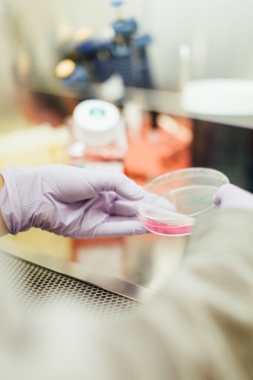
The first report in 1923 of ultraviolet (UV) light emission during cell division in onion roots was from Alexander Gurwitsch5, who subsequently found that UV light could stimulate cell division, and posited the existence of “mitogenic rays” governing basic processes of growth and repair6.
The early observations of Gurwitsch were further developed in the 1980s and 1990s by Fritz-Albert Popp and L.V. Beloussov, who elucidated many of the basic properties of ultra-weak biophoton emissions6,7.
Since that time, biophotons have been reported to be involved in a variety of biological functions8, including secretion of regulatory neurotransmitters9, respiratory activity in white blood cells10, seed germination11, yeast growth12,13, algae growth14, and interactions between fish eggs and embryos15.
Biophoton Signaling in Living Cells
While it may not be surprising that biophoton emissions reflect biochemical activity, there is increasing evidence that light itself plays a role in how the cells in our bodies communicate with one another16.
Two seminal studies from Gunther Albrecht-Buehler in the Proceedings of the National Academy of Sciences USA17,18 reported long-range interactions between cells due to infrared light, concluding that
“The results suggest that near-infrared light scattering by the cells mediate a long-range attraction between them, which does not require physical contact and enables them to detect each other’s presence.”18
And a remarkable study by Daniel Fels in 2009 reported that cells can influence one another using non-molecular signals, most probably photons19.
Fels looked at interactions between two groups of single-celled organisms (paramecium caudatum) chemically isolated from each other in clear containers.
In a series of experiments, Fels reported that information regulating cell division and energy uptake passed through a quartz window between the cells, but was blocked by one made of glass.
Since quartz easily transmits UV light, whereas glass does not, Fels suggested that the long-range effect was mediated by photons in the UV range.
Since 2009, Fels has continued with this research, in 2016 reporting interactions between two different species of microorganisms, Paramecium caudatum, and Euglena viridis20,21.
Fels also conducted experiments in which the groups of microorganisms were shielded from each other against electromagnetic fields (EMFs) in the optical spectrum. He found that some effects were blocked by EMF shielding, suggesting that an electromagnetic interaction was involved.
Biophotons and the Body of Light
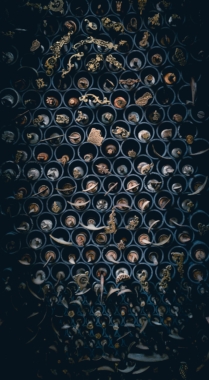
For example, the Jain concept of the kärman sarir, describes a subtle body that surrounds the soul, interacting with consciousness emanating from the soul (Figure 1).
Jain teachings describe the interaction of the soul’s consciousness with the karmic field, producing emanations termed adhyavasāya.
Adhyavasāya are described as 2 types: psychical and physiological.
These adhyavasāya are thought to be energetic in nature and are described in a manner that bears a strong resemblance to modern descriptions of electromagnetic fields22.
Indigenous Wisdom, Biofields and Healing
Ancient viewpoints such as these are reflected in an emerging biofield paradigm describing a complex dynamic informational field essential to all life23.
This shift from a purely mechanical, chemistry-based viewpoint to an information-based view is reflected in advances in closely-related fields that once seemed disconnected: biophysics, biology, psychology, and the developing fields of mind-body research such as psychoneuroimmunology and psychosocial genomics23.
These results have helped substantially to form a foundation for an expanded integrative medical model and hold promise for a better understanding of health, healing, and better science of life23.
What are your thoughts? Please share your perspectives in the comment section below.
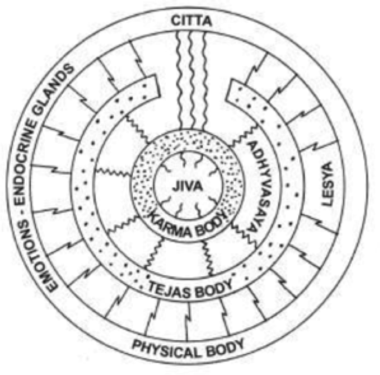
References
- Cifra M, Fields JZ, Farhadi A. Electromagnetic cellular interactions. Prog Biophys Mol Biol. 2011 May;105(3):223-46.
- Cifra M, Pospíšil P. Ultra-weak photon emission from biological samples: definition, mechanisms, properties, detection and applications. J Photochem Photobiol B. 2014 Oct 5;139:2-10.
- Popp FA. Cancer growth and its inhibition in terms of coherence. Electromagn Biol Med. 2009;28(1):53-60.
- Ives JA, van Wijk EP, Bat N, Crawford C, Walter A, Jonas WB, van Wijk R, van der Greef J. Ultraweak photon emission as a non-invasive health assessment: a systematic review. PLoS One. 2014 Feb 28;9(2):e87401.
- Gurwitsch A. Die Natur des spezifischen Erregers der Zellteilung. Archiv für Entwicklungsmechanik der Organismen. 1923;52:11–40.
- Beloussov LV, Opitz JM, Gilbert SF. Life of Alexander G. Gurwitsch and his relevant contribution to the theory of morphogenetic fields. Int J Dev Biol. 1997 Dec;41(6):771–7.
- Popp FA, Li KH, Gu Q. (eds). 1992. Recent advances In biophoton research and its applications. World Scientific. Singapore, New York, London, Hong Kong.
- Popp F A, Chang JJ. The physical background and the informational character of biophoton emission. In Chang, J.J., Fish, J., & Popp, F.A. (Eds.), Dordrecht, The Netherlands: Kluwer. Biophotons. 1998. (pp.238–250).
- Galantsev VP, Kovalenko SG, Moltchanov AA, Prutskov VI. Lipid peroxidation, low-level chemiluminescence and regulation of secretion in the mammary gland. Experientia. 1993 Oct 15;49(10):870–5.
- Shen X, Bei L, Hu TH, Aryal B. The possible role played by biophotons in the long-range interaction between neutrophil leukocytes. In Beloussov, L., Popp, F.A., Voeikov, V., & VanWijk, R. (Eds.), Biophotonics and Coherent Systems. Moscow: Moscow University Press. 2000. (pp.336–346).
- Kuzin AM, Surbenova GN. Secondary biogenic irradiation of plant structures after gamma-irradiation at low dose. In Beloussov, L.V., & Popp, F.A. (Eds.), Biophotonics. Moscow: Bioinform Services. 1995 (pp.257–265).
- Quickenden TI, Que Hee SS (1976) The spectral distribution of the luminescence emitted during growth of the yeast Saccharomyces cerevisiae and its relationship to mitogenetic radiation. Photochemistry and Photobiology 23: 201–204.
- Musumeci F, Scordino A, Triglia A, Blandino G, Milazzo I Intercellular communication during yeast cell growth. Europhysics Letters. 1999;47: 736–742.
- Jaffe LF (2005) Marine plants may polarize remote Fucus eggs via luminescence. Luminescence 20: 414–418.
- Beloussov LV, Burlakov AB, Louchinskaia NN. Biophotonic patterns of optical interactions between fish eggs and embryos. Indian J Exp Biol. 2003 May;41(5):424-30.
- Vanwijk R. Bio-photons and Bio-communication. Journal of Scientific Exploration. 2001;15(2): 183–197.
- Albrecht-Buehler G. Rudimentary form of cellular vision. Proceedings of the National Academy of Sciences USA. 1992; (89):8288–8292.
- Albrecht-Buehler G. A long-range attraction between aggregating 3T3 cells mediated by near-infrared light scattering. Proc Natl Acad Sci U S A. 2005 Apr 5;102(14):5050-5.
- Fels D. Cellular communication through light. PLoS One. 2009;4(4):e5086.
- Fels D. Physical Non-Contact Communication between Microscopic Aquatic Species: Novel Experimental Evidences for an Interspecies Information Exchange. J Biophys. 2016; 2016: 7406356.
- Fels D. Endogenous physical regulation of population density in the freshwater protozoan Paramecium caudatum. Sci Rep. 2017; 7: 13800.
- Jain S, Daubenmier J, Muehsam D, Rapgay L, Chopra D. Indo-Tibetan Philosophical and Medical Systems: Perspectives on the Biofield. Glob Adv Health Med. 2015 Nov;4(Suppl):16-24.
- Rubik B, Muehsam D, Hammerschlag R, Jain S. Biofield Science and Healing: History, Terminology, and Concepts. Glob Adv Health Med. 2015 Nov;4(Suppl):8-14.
Learn More About the Author
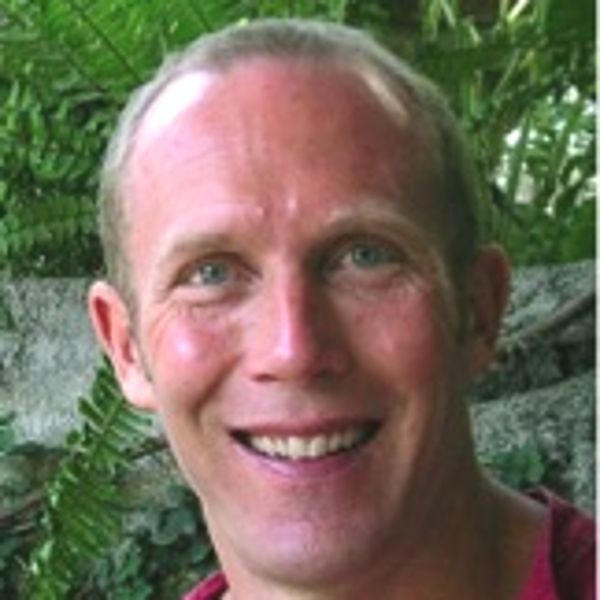
CHI Director of Technology Innovation

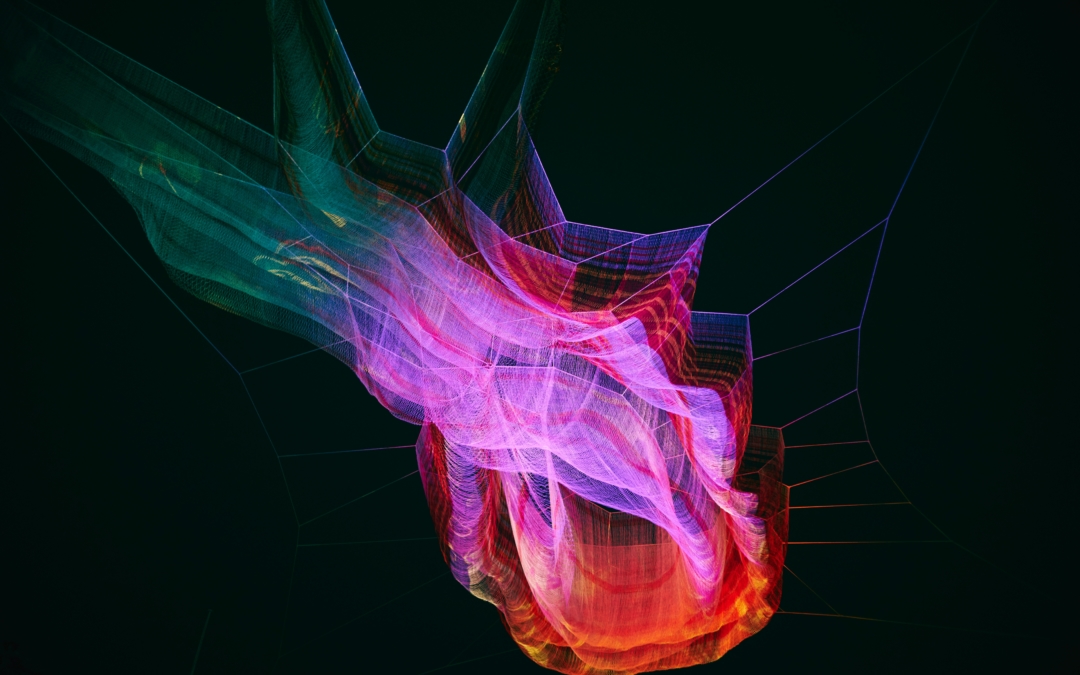
Thank you, Dr. Muehsam, for this article. I hope C’hi (the energy) will be studied in conjunction with bio-photons soon. Every time a person takes a tablet (vitamin or anything) pause for a moment with the tablet in one palm, cover with the other palm, and using mind intention infuse C’hi energy into the tablet with instructions that you receive maximum benefit from this medication, with no harm. Persons doing Reiki or Tai C’hi Tuan probably already do this, but anyone can accomplish this, and with regular practice, learn a valuable tool to improve their own health. Instead of popping a pill into our body ‘without a second thought,’ deliberately infusing energy into items we consume, with specific instructions (information) that transmute into energy once inside us, will stimulate improved health.
Thank you, Chris, for your thoughts.
Beverly Rubik, a pioneer in biofield science and a member the CHI Scientific Advisory Council, recently published a study that directly addresses your ideas:
Dr. Rubik reported that biophoton emission was modulated by intention, energy healing, and bioenergetic mind-body practices (Rubik B, Jabs H. Effects of Intention, Energy Healing, and Mind-Body States on Biophoton Emission. In: Cosmos and History: The Journal of Natural and Social Philosophy, vol. 13, no. 2, 2017).
The study also reported that, “Results showed that (1) biophoton emission from healers’ hands diminished significantly by 11% posthealing; (2) biophoton emission during energy healing showed a unique pattern for each treatment session; (3) changes in biophoton emission from the forehead, heart, and abdominal regions of patients pre-post energy healing showed no discernible pattern for a small number of diverse patients; (4) subjects who engaged in bioenergetic practices emitted more biophotons from specific bodily regions, some in alignment with their intent.”
It’s fascinating to see remarkable results such as these, with the potential to open up a new understanding of intention, diverse mind-body states, and healing. And we’re blessed to have Dr. Rubik as an advisor and collaborator!
Best,
David
Dr M
I appreciate your take on bio photons. While I mostly agree, I find bio photons are a subtle energy as opposed to a “weak” expression. Subtle meaning closer to source. The emission is derived from the cell’s center or DNA and is indicative of states of cellular regeneration. Neuro sciences show our body replicates via electrical expressions which are always followed by a chemical cocktail of said electrical expression, instructing the cell how to use the chemistry to fulfill the task at hand. (think Lightening and Thunder). I look forward to hearing more from you and learning how we may collaborate to support bio physics in the Western World. Best Of Success Is Yours! Virginia Biasizzo, NDTP
Thank you Virginia for sharing your thoughts. It’s very helpful to hear everyone’s ideas, and there’s certainly much to discuss on topics like these. I think it’s quite important to have dialogues between healing practitioners and scientists so that we can clarify, refine and develop new language that helps us to express ideas such as these. This can be particularly tricky with new ideas, for which we often need new language, and new scientific data is coming in qutie rapidly nowadays and can be difficult to interpret.
Your Lightning and Thunder analogy is lovely, and I find it interesting to think on how biophotons and electrical interactions in the body could give rise to changes in biochemistry (rather than only the other way around). The standard view of biochemistry is of course the opposite (that chemical interactions give rise to all biological activity), and with the emerging fields of biophotonics and bioelectromagnetics, we may indeed be seeing new levels of interaction and information flow.
Regarding how we describe biophoton interactions, the terms “weak” and “ultra-weak” have been adopted by the scientists studying biophoton emissions in order to convey that these are of very low strength compared to common sources of light. In this context, “weak” simply means of relatively low amplitude, and doesn’t refer to the ability of biophotons to affect change. While the term “subtle energy” has indeed become popular, it’s also caused a good bit of confusion: are these “energies” really energy at all, or are they information, or some form of spirit, etc? Just what does “subtle” mean? Does it mean unmeasurable, or just very faint, or perhaps so fine and complex in structure that it’s difficult to detect? I like your idea of “subtle” meaning “closer to the source,” but since so many other definitions of “subtle” have been used, I generally avoid this term unless there is time to clearly define which of the many meanings I’m referring to.
On DNA and the origin of biophotons: certainly there is a fascinating electrical dance that occurs during DNA transcription and replication, and this has been identified as a source of biophotons. Significant biophoton sources such as the mitochondria and fascia have also been identified, and a role in neural signaling has been suggested, perhaps indicating more comprehensive roles for biophoton signaling:
https://www.ncbi.nlm.nih.gov/pmc/articles/PMC5871034/
https://arxiv.org/pdf/1012.3371.pdf
https://tbiomed.biomedcentral.com/articles/10.1186/s12976-016-0042-5
https://pdfs.semanticscholar.org/0415/ce7863b64fb2412ed196c7995eba6a3f9eff.pdf
These articles outline some of the ways that biophotons are produced, and the many questions that remain around the origins and function of biophotons. I’m excited to see that this is an active area of interest; besides the possibility of uncovering new principles of biology, I find it fascinating that we are composed of light in some fundamental manner – that this light is somehow an essential aspect of Life itself.
And thank you for sharing your thoughts. I’m very much looking forward to seeing how the study of biophotons evolves in the future, and how this may help towards a better understanding of the science and practice of healing.
Best,
David
David, thank you for a great summary article on biophoton research and role in healing! I do have a few questions for you. First, since cancer cells are correlated with biophoton emission, in contrast to normal cells, may we yet conclude scientifically that living cells/beings emit biophotons (aka light leaves us) during their dying or death process, while healthy cells/beings will contain the biophotons and their activity more within the body? In other words is emission more correlated with dying, and non-emission with healthy living? Also, scientifically are we ready to put biophoton activity in either a local or nonlocal effects category, or, since biophotons are seen in a variety of frequency bands, would we say they have both local (electromagnetic) AND nonlocal effects due to the way energies transform? Lastly, what do you think of Tony Fleming’s theoretical model of the biophoton (since you didn’t mention it, but I’m reading his book Inside the Photon)? Thanks for the opportunity to dialogue with you on this topic. For me, after studying intensely about energy (e.g. EM, biophotonic, torsion, dark energy/matter, gravity; energy/matter, wave/particle interactions), I’ve come to actually define consciousness (as a field) as “energy-carrying-information”. More precisely, as “energy-carrying-information holographically, nonlocally as well as locally. With all energetic communication as evidence of some level of consciousness activity, spanning nonlocal realms as well as local/EM realms. And energy transformation occurring more “slowly” or measurably from magnetic, to electric, and then to more chemical layers. This to me is the way we can say that consciousness is the fundamental field (as more physicists are saying), and go on to define its relationship to the varying energies studied in physics, biophysics, as well as astrophysics. Perhaps we are ready to say that all is light (array of photonic activity), which we experience as consciousness (from the tiniest instinctual to the most complex), and study as energy converting to matter (which is really energy appearing as matter due to relativity). Thoughts? Respectfully, Valerie Varan, LPC psychotherapist and author of Living in a Quantum Reality: Using Quantum Physics and Psychology to Embrace Your Higher Consciousness
Thank you Valerie, for these interesting comments and questions. I’ll answer them as best as I can:
Observations of increased biophoton emissions from cancer cells with increasing cell density, as compared to normal cells, do seem to suggest that signaling between these cell types is different. But this may also be an indication of the well-known tendency of cancer cells to proliferate. So, I think it’s too early to speculate about whether this is a signal of cell death or death of the host organism. I do wonder though, if a healthy organism might show more efficient or more coherent biophoton signaling, and if there are ways to measure that.
The question of whether biophoton activity can be thought of as local or nonlocal is quite interesting too. In terms of a classical understanding of EM theory, photons emitted from the body would simply be a local effect: light propagating from a source. Supporting this, a recent study from Daniel Fels in 2017 gives support for the idea that regulatory signaling of biophotons acts via a local EM interaction, and can be blocked using EM shielding materials:
https://www.nature.com/articles/s41598-017-14231-0
That said, from the point of view of quantum field theory, the notion of locality itself becomes more blurry, and there could be other versions of EM theory that embody nonlocality too. In order to give scientific support to the idea that biophotons can act in a nonlocal manner, one would need to do an experiment that showed some sort of nonlocal interaction, for example, to show that emissions from two spatially separated biophoton sources were correlated in a manner that would indicate a form of entanglement – a kind of biological analog of the Einstein Podalsky Rosen experiment?
This reminded me of an interesting experiment I came across recently looking at the influence of two groups of fish on each other:
http://journals.sagepub.com/doi/abs/10.1177/1559325817750067
Perhaps an analogous experiment with biophotons could be adapted with some of the methods used by Fels in 2017?
And thank you for mentioning Tony Fleming’s Self-Field Theory (SFT), which I think is very interesting, and reminded me of Pharis Williams’ Dynamic Theory. I haven’t read Flemings ‘Inside the Photon’ yet, but his theoretical papers present a very different model for nuclear and EM interactions, and he’s put forth interesting ideas on the relevance to biology. To give an informed opinion on SFT, I’d need to read/think a bit more deeply, but what I don’t understand yet is: what are the testable hypotheses that SFT makes that other theories do not? Has Fleming suggested any experimental means of testing SFT?
At any rate, I’ve found it interesting that today there a number of physicists publishing papers concerning the foundations of physics, relations between gravity and EM fields, nature of inertia, etc., and I’ve seen a resurgence of interest in ideas like David Bohm’s pilot wave model for quantum theory, which has a very different physical meaning than the probabilistic interpretation of Schrödinger. So, maybe sometime soon we’ll see new theoretical ideas that advance our understanding of ideas such as nonlocality, and perhaps even predict phenomena which have yet to be observed.
Best,
David
To Valerie/David, I believe your thoughts on locality or non-local are shared by Dr. Gary Schwartz Phd. University of Arizona. He’s studying consciousness as existing outside of the brain (non-local), with the brain acting like a TV set receptor but not the producer of thought. I practice as a biophoton therapist using an instrument called a Chiren. Its effectiveness to heal is controversial. However, I found it to be life saving, life giving device for some, other not so much. I also combine mindfulness practices in my sessions. So glad to have come across this site. Thank you.
I have more of a question than a description of advances in healing self and others. I have recently tried to read most of the books published that write about human intentional healing. Most of these books do not explore the scientific aspects of this process. From the findings described above, is it OK to suggest that those using human intentional healing can learn more about what they are attempting by continuing to interact with your web site and research?
therapeutic touch has research going back over 40 years . it may interest you .sincerely margaret deane
Good Research.Reviving Jain concept of Jiva .
A very clear description is Available in Panchadasi book,Astavakar Gita and Sound of Healing.
Thank you , this article opens my mind about connection between indigenious style healing and modern science
It’s a interesting physiological
Adaption to bridge the consciousness with biophotons
And have unusual access to the autonomic nervous system where biophotons through thought can have various pathways through a.n.s. are under at will Volitional control
Released from the brain performing multiples of functions, from movements by themselves or be attached with
Messages, assist in Proper nerve signaling, emotional release,
stress reduction and healing
Modalities.
When I move biophotons they
Generate heat as a result from
Large consentrated movements
The sensation is very pleasant and it happens to cause Goosebumps immediately (about 2-3 seconds) from
Any thought I choose at anytime
Anywhere. Although very similar to V.G.P. voluntary generated piloerection for which the
Cause has been speculated
As those whom have this ability
Have conscious control of their
Smooth muscles. This is incorrect because we would have control of smooth muscles all the time and not just during
Vgp episodes. The reason for
The vgp is caused by the movements of biophotons and
When they move under thought
Control they emit heat which
Activate smooth muscles then in turn raise hair follicles and
Then Goosebumps.
As I said a very interesting
Physiological adaption.
Dr David Muehsam
In the last 50 years or so, practical work has been done on the energy transfer and healing by practitioners of Sahajayoga.
They have successfully understood the bio photonic vibrations on their hands and transferred/enhanced it.
Subtle – near the source definition is so pertinent here. As sacrum bone in us humans has the energy in dormant form till it is made kinetic. This energy source then makes the mitochondria emit the bio photons in such a judicious manner that it self heals any part of the human body. In case someone has difficulty, then a fellow being can pass that bio photon to another being. This biophoton does not limit it self to gender, creed, ethnicity or blood group etc but can travel universally across all living beings.
I understand you are in Italy and can experience this first hand at https://www.google.co.in/search?q=cabella+italy+sahajayoga+address&ie=UTF-8&oe=UTF-8&hl=en-in&client=safari#
Looking forward to you sharing your experience after the interaction
How do ancient practices, such as the use of electric currents and magnetic fields for healing, align with the emerging information-based viewpoint in modern bioelectromagnetics? Can you elaborate on the parallels between these ancient practices and concepts found in Tibetan, Jain, and Vedic medical traditions, where energy and information are fundamental to health and healing?